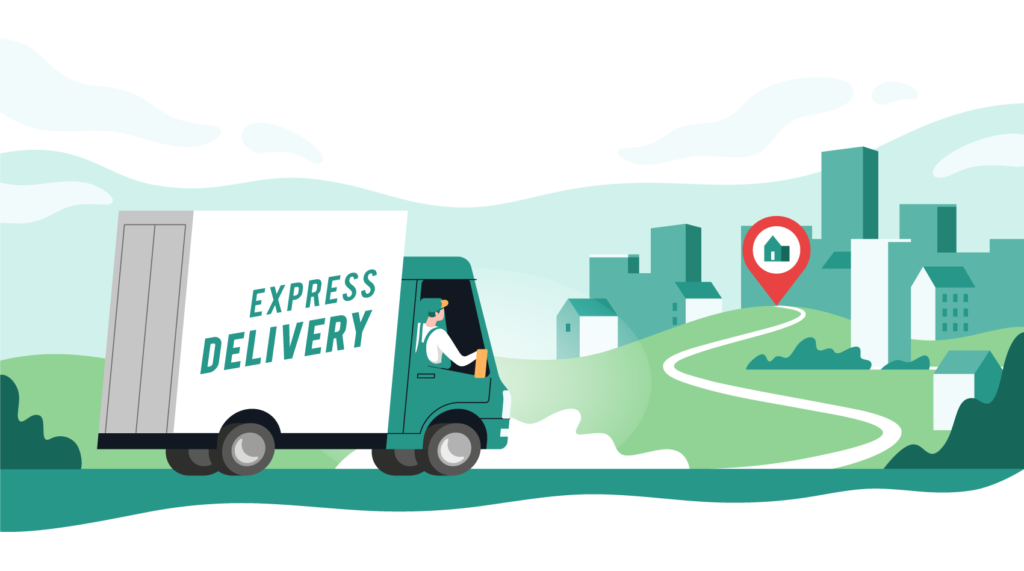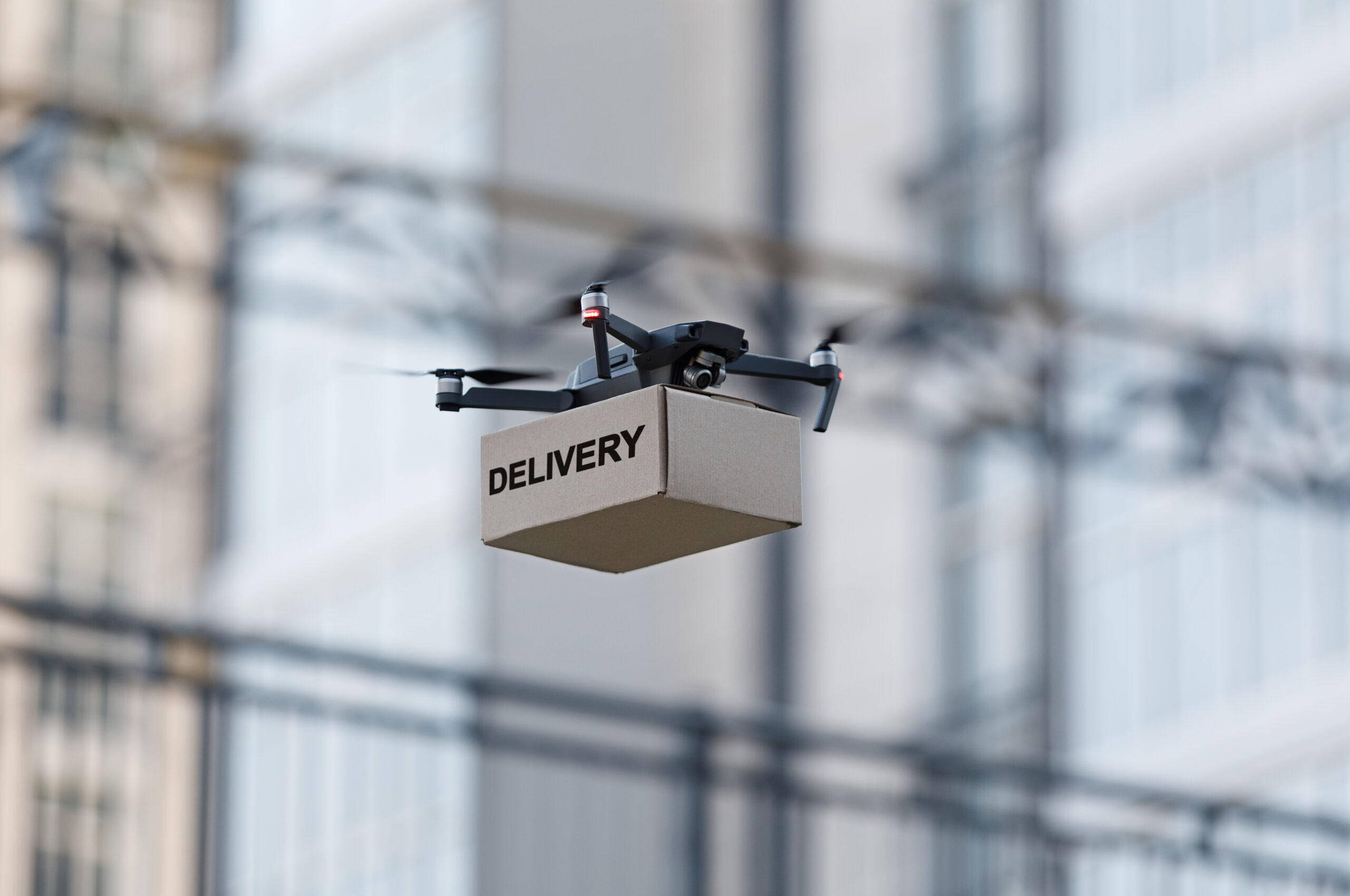A change in consumer behaviour, and a soaring number of online orders has encouraged many businesses to think about how they can make their last mile deliveries more sustainable.
As a result of the COVID-19 pandemic, retailers have been faced with a surge in the number of orders being placed and, as a result, have had the very nice problem of having more deliveries to fulfil.
More deliveries unfortunately means more vehicles out on the road and this brings with it an increase in the amount of carbon emissions being produced.
With that in mind, what exactly is the ‘last mile’ in delivery and logistics and how can we make it more sustainable?
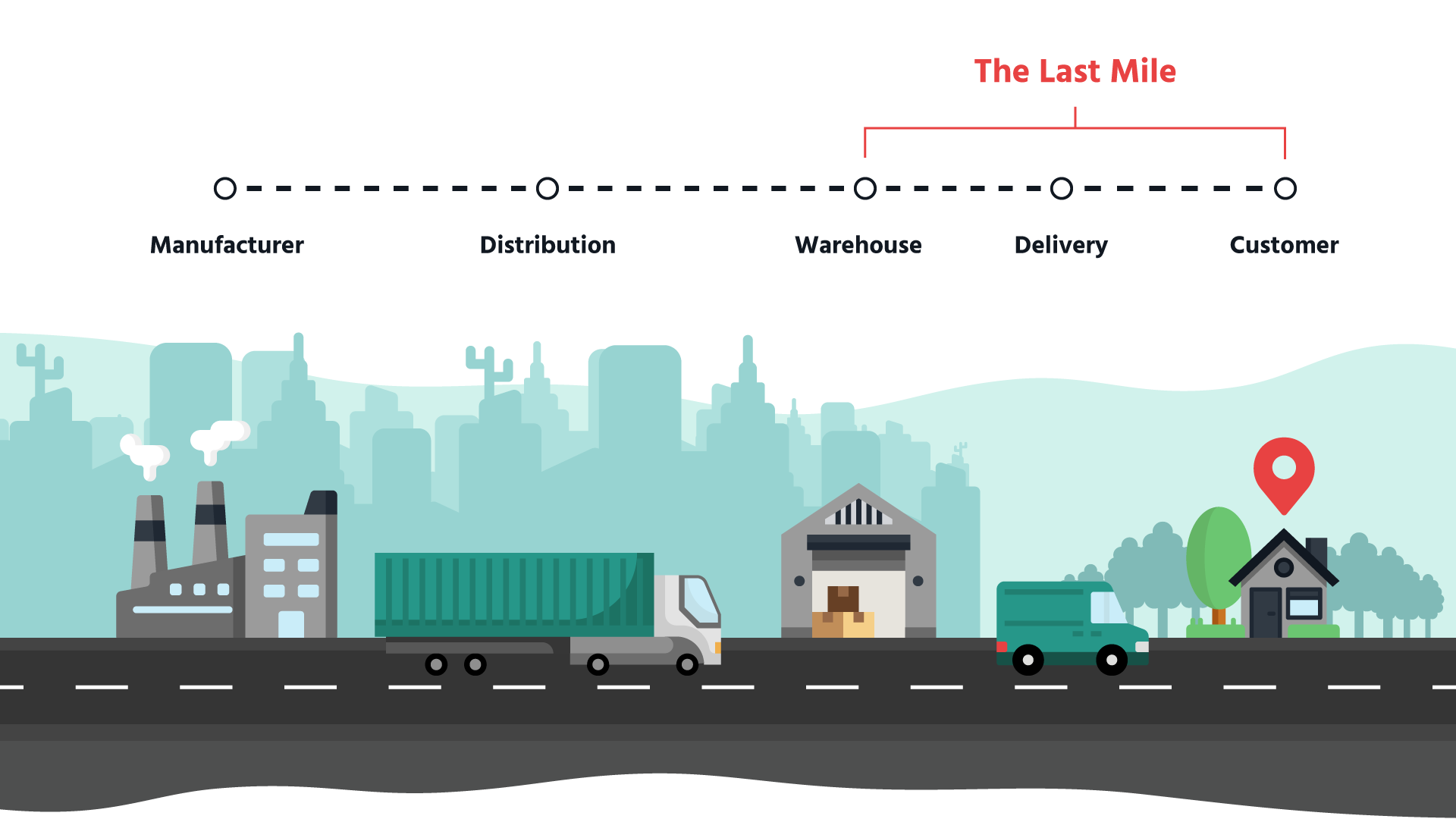
What is ‘the last mile’ in delivery and logistics?
When we refer to ‘the last mile’ within delivery and logistics, what we’re actually referring to is the final leg of a product’s journey.
Typically, goods will arrive at a penultimate destination. This will be the last place that the goods arrive before they are ultimately delivered to the customer.
This could be anything from a retail store to a warehouse or localised depot.
In a recent report on the Sustainable Last Mile by Accenture, it was stated that:
“Last-mile delivery accounts for 53% of the total cost of shipping—and 41% of total supply chain costs.
With no interventions, we can expect a 32% jump in carbon emissions from urban delivery traffic by 2030.
Consumers are watching. They have a tall order: convenience, speed and sustainability at the right price.”
The goal of the last mile is to deliver an item to its intended recipient in the quickest way possible and this has been pushed even further by growing customer demands throughout the COVID-19 pandemic.
We’ve seen this reflected in the data inside our Stream platform as well, with the number of orders being processed in March 2021 being 2.2x greater than the number of orders processed in March 2020.
Why is making ‘the last mile’ more sustainable important?
There is a very good reason that sustainability is one of the hottest topics in the world at the moment, and we can only see this growing over the next few years.
“Sustainability is important for a very simple, very straightforward reason: we cannot maintain our quality of life as human beings, the diversity of life on Earth, or Earth’s ecosystems unless we embrace it.” – Permaculture Research Institute
Sustainability is defined as the ability for something to be sustained in a certain way or at a certain level.
When we talk about sustainability in delivery and logistics, we are referring to making a conscious effort to reduce the overall carbon footprint of our delivery operations.
How can my business work towards achieving a more sustainable last mile?
There’s no doubt that it takes every business, and consumer for that matter, working together to create an ultimately more sustainable way of life.
But what can your business do to work towards this by creating a more sustainable last mile?
Optimise your depot locations
Optimising the locations of your depots is a great way of ensuring that the last leg of the journey, from the warehouse to the delivery destination, is as short as possible, for as many of your deliveries as possible.
This goes back to our earlier point about making the distance between the final depot and the delivery destination shorter, to enable the quickest possible delivery.
As an example, if the majority of your orders are being delivered in the centre of Leeds, then it makes sense to have your depot positioned in, or around, the city centre and not 35 miles away in Sheffield, as this would add at least an additional 70 miles onto the route of each vehicle being used to make deliveries.
Optimise delivery routes
Along with optimising the location of your depots, it’s also possible to optimise your delivery routes.
By creating optimised routes, and planning your deliveries in the most efficient order, you can reduce the amount of miles your drivers have to travel every time they’re on the road.
By reducing the overall driving distance of your team, you’re instantly reducing the amount of carbon emissions that are being produced by your business.
Fun Fact:
Our Steam platform makes it possible to automatically plan the optimised route for completing all the deliveries on each specific run!
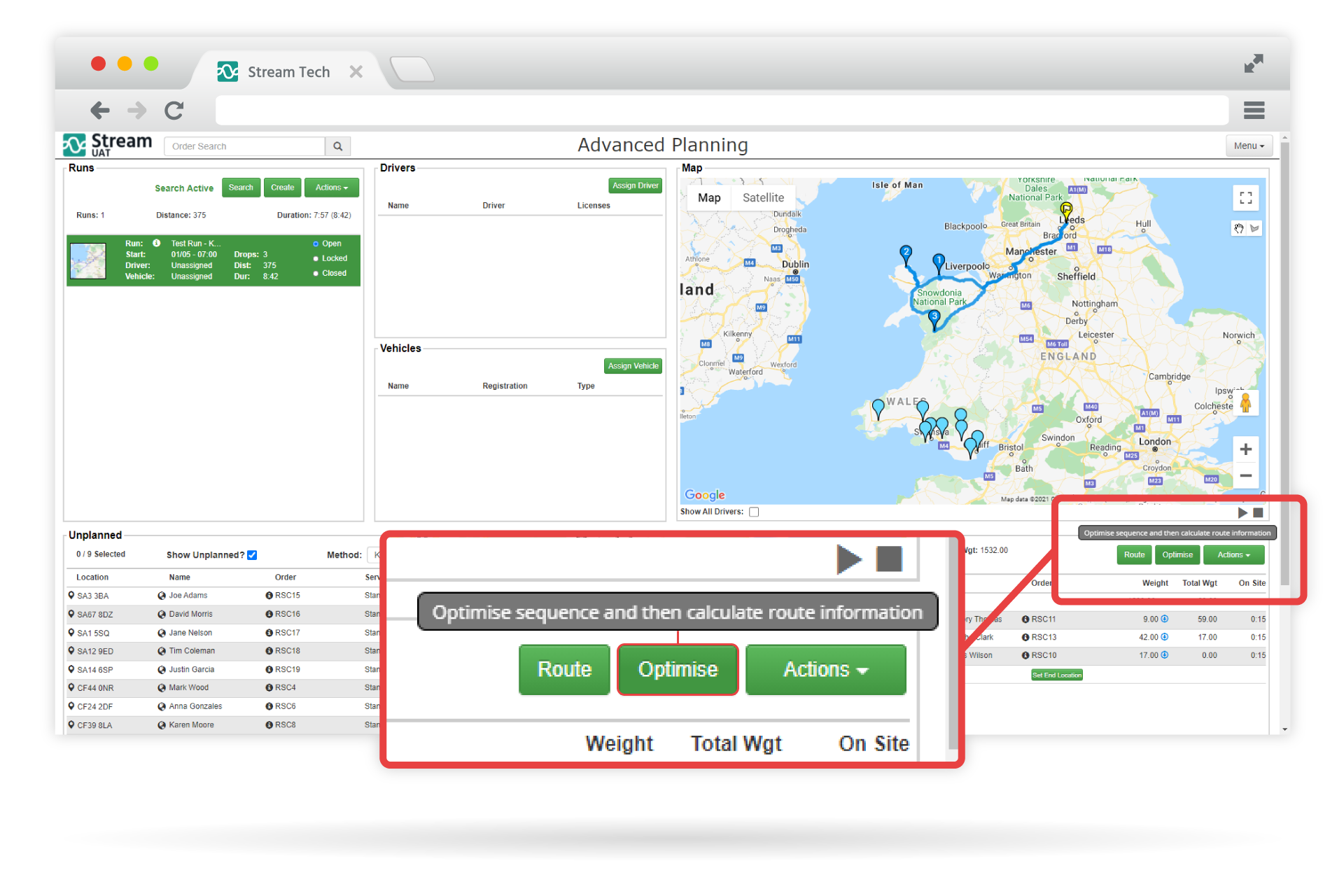
Use the most appropriately sized vehicles
It’s important to always, where possible, use the most appropriately sized vehicles for each of your delivery runs.
Generally speaking, the larger the vehicle, the greater the environmental impact.
Using two small vehicles to fulfil a big order, when one larger vehicle would do, is impacting the efficiency of your business and producing more carbon emissions.
Likewise, delivering a single order on a large vehicle when it could have been fulfilled using a much smaller, lesser impact vehicle will also produce more emissions.
By looking at what vehicles you’re using for different types of orders, you’ll be able to analyse where you have scope to use lesser impact vehicles and reduce the emissions that are being generated as a result of your deliveries.

Use zero emissions / electric vehicles where possible
Electric, or zero emissions vehicles are an excellent way to create a more sustainable delivery operation.
Some businesses are even opting to use e-bikes and bicycles as a means of fulfilling their last mile deliveries for small orders, as these produce zero emissions and help them to drastically reduce their carbon footprint.
Currently there is a shortage of electric vehicles with the appropriate range and payloads for many companies to make them work for their delivery operations.
However, these are quickly becoming a real world possibility as the technology continues to advance and electric vehicles become more complex and much more capable.
Although it may be currently difficult for your business to move exclusively to electric vehicles today, it’s definitely an option to explore as we continue down this road to a more sustainable last mile.
Keep your fleet up-to-date
It’s vital to ensure that you keep your fleet up to date if you’re working towards creating a more sustainable last mile.
Newer vehicles are created using up-to-date materials and technologies.
Even vehicles that were made 7-8 years ago are far less efficient than the newly registered vehicles we see today.
Transportation is one of the industries producing the highest amount of carbon emissions and, as a result, the government regularly updates the laws in relation to automotive manufacturing.
“With the need to lower CO2 emissions in newer vehicles, with harsh penalties for those who don’t, car manufacturers have had to take a step back and completely re-evaluate how they build cars.” – Greener Ideal
Within the congestion charge zone in London, an Ultra Low Emissions Zone initiative was brought in, meaning most vehicles, including cars and vans, need to meet the ULEZ emissions standards or their drivers must pay a daily charge to drive within the zone (£12.50 for most vehicle types & £100 for heavier vehicles, including lorries over 3.5 tonnes).
Older vehicles are also built using heavier materials, such as steel, which means more fuel is required in order to make the vehicle move.
In more modern vehicles, automotive manufacturers are using materials such as aluminium and fibreglass, reducing the overall weight of vehicles and, in turn, reducing the amount of fuel required to power them, making them more efficient.

Analyse the available data
Whilst having data available from your deliveries is great, the important thing is knowing how to actually interpret this data and how to use it to provide actionable insights to improve your business.
It all starts with setting goals for areas where you can make your deliveries more efficient.
You can set goals that are tracking your deliveries per route, per vehicle or even per driver, to evaluate where any inefficiencies may be occurring.
Once you have goals, you know what you need to achieve and you can work out what needs to change in order for you to achieve it.
If you’re not setting any goals, analysing the available data and combining these to work out your areas improvement, then your business will find it very difficult to make positive steps towards creating a more sustainable last mile.
Fun Fact:
Our Stream Analytics makes it possible for you to build Key Performance Indicators (KPIs) and track and analyse the data that’s important to helping you improve your business.
Not only that, but we can also help you plug it into your data analysis tools of choice (such as Google Data Studio) so you can keep using the data systems that you already have in place.
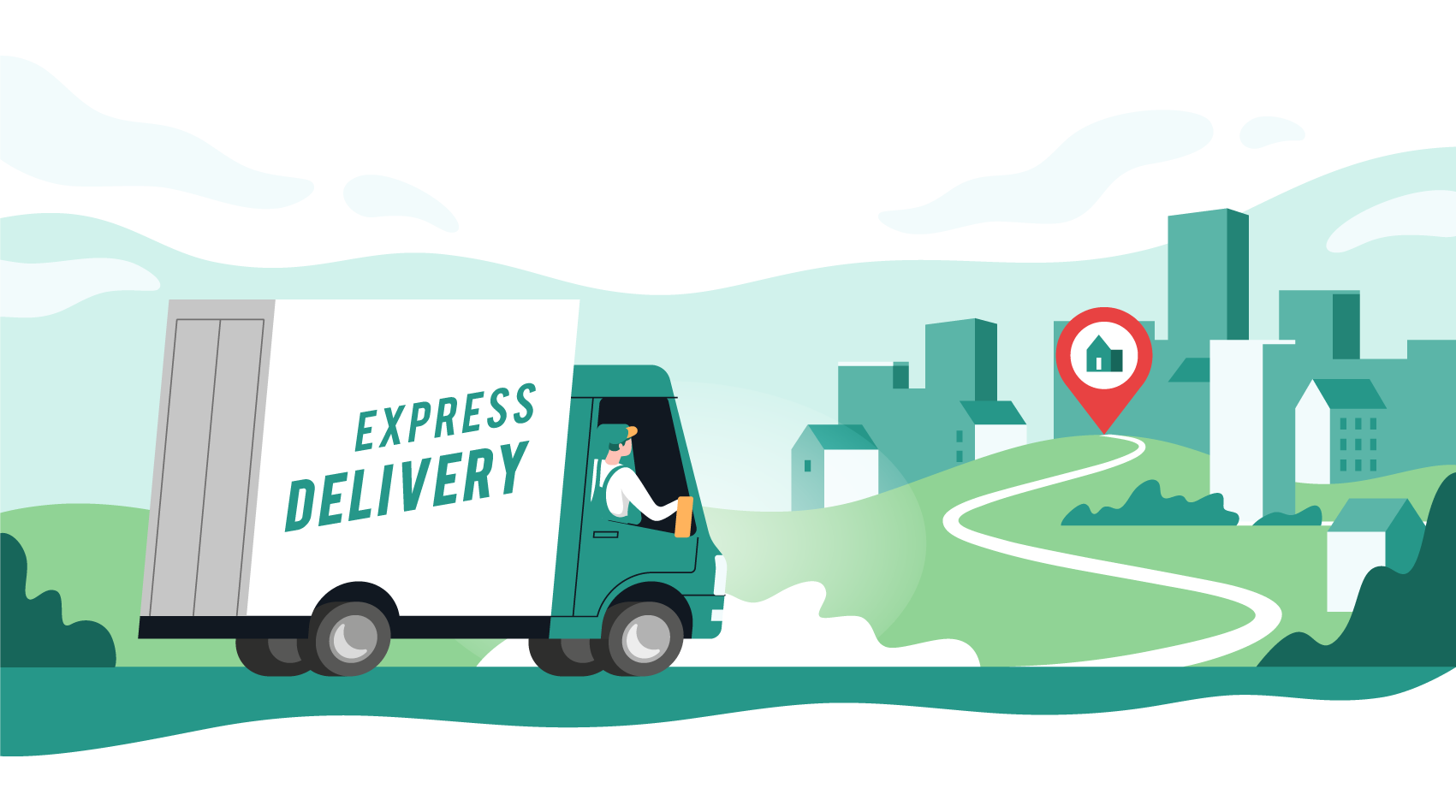
What does the future look like for a more sustainable last mile?
While we completely appreciate that jumping from where you are now, to a zero-emissions company, may be almost impossible, we also know that it’s about making that progress towards a more sustainable future.
“32% of consumers say they value sustainability more than practical factors such as cost and speed” – Metapack
Whether that’s incentivising greener delivery choices, updating your fleet or optimising your delivery routes, there are steps that can be made today to start you heading in the right direction for a more sustainable last mile.
As more companies adopt the mindset of creating a more sustainable future, and the technology available gets even more powerful, we expect to see a greater adoption of electronic vehicles and more innovative ways of creating a more sustainable last mile.
Get on the road to a more sustainable last mile
If you’d like to learn more about how the Stream platform can help you start making progress towards running a more sustainable delivery operation today, then why not have a quick chat with our team?
